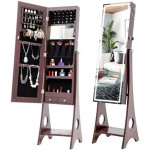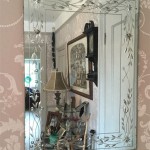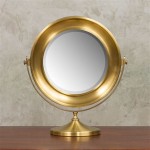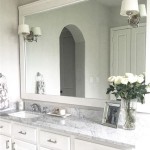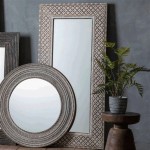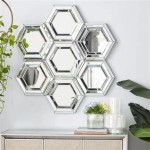How Tall Are Floor Mirrors?
Floor mirrors, also known as full-length mirrors, serve a crucial function in homes and businesses, offering a complete view of one's reflection. Their height is a significant factor influencing their utility and placement. While there isn't a single standard height for all floor mirrors, understanding typical dimensions and the factors influencing them can assist in selecting the right mirror for specific needs.
The most common height range for floor mirrors falls between 50 and 70 inches. This range accommodates the average human height, enabling a full-body view. Mirrors within this range are widely available and suitable for a variety of spaces and purposes.
Mirrors shorter than 50 inches are less common and are sometimes categorized as vanity mirrors or dressing mirrors. While they may be suitable for viewing specific areas of the body, they typically do not provide a full-length reflection. Their shorter stature can make them more portable and adaptable to smaller spaces.
Mirrors taller than 70 inches offer an expansive reflection and can even create an illusion of greater height in a room. These oversized mirrors can be a striking design element but require ample wall space and careful consideration of placement due to their size. Some exceptionally tall floor mirrors can exceed 80 inches or even reach up to 90 inches, providing a grand and dramatic visual impact.
The overall dimensions of a floor mirror are typically expressed as height by width. While height is the primary consideration for full-body viewing, the width also plays a role. Narrower mirrors, for instance, may be sufficient for individual use, while wider mirrors can accommodate multiple people simultaneously.
Beyond the numerical measurements, the perceived height of a floor mirror can be impacted by its frame and the surrounding décor. A thick, ornate frame can visually reduce the reflective surface area and make the mirror appear smaller than its actual dimensions. Similarly, placing a mirror in a small, cluttered room can diminish its perceived size. Conversely, a thin, minimalist frame or placement in a spacious, well-lit room can enhance the perceived height and create a sense of openness.
The intended use significantly influences the ideal height of a floor mirror. For example, a dance studio or a clothing store might prefer taller mirrors to allow for full-body movement observation and garment assessment. In a residential setting, the ceiling height and the available wall space will likely dictate the maximum height of the mirror. A tall ceiling can accommodate a taller mirror, enhancing the sense of grandeur in the space. However, a low ceiling might necessitate a shorter mirror to maintain balanced proportions.
Different styles of floor mirrors can also influence height considerations. Cheval mirrors, for example, are freestanding and often feature an adjustable tilting mechanism. Their height is typically within the standard range, but the ability to adjust the angle can affect the portion of the body reflected. Leaner mirrors, designed to lean against a wall, are often taller and narrower than traditional floor mirrors. Their height can vary significantly depending on the design and intended aesthetic.
When purchasing a floor mirror, careful measurement of the intended location is essential. This includes measuring the height and width of the available wall space, as well as considering any surrounding furniture or architectural features. This preemptive measurement ensures the chosen mirror fits comfortably within the designated space and complements the existing décor.
The material and construction of the frame also influence the overall height and weight of the mirror. Wooden frames can add significant height and weight, while metal frames tend to be lighter and slimmer. The frame material should be chosen based on the overall aesthetic of the room and the structural support required for the mirror's size and weight.
Transportation and installation should also be considered when selecting a floor mirror. Larger, heavier mirrors may require specialized handling and installation procedures. Measuring doorways and hallways is crucial to ensure the mirror can be transported into the desired location without damage. Some retailers offer delivery and installation services, which can be beneficial for larger or more delicate mirrors.
In summary, the height of floor mirrors varies depending on factors such as intended use, available space, and design preferences. Understanding the typical height ranges and the factors influencing them allows for informed decisions and the selection of a floor mirror that best suits individual needs and complements the surrounding environment.

Gogexx 32 In W X 71 H Oversized Arch Full Length Gold Wall Mounted Standing Mirror Floor Gx J M007 The Home Depot

Neutype 71 In X 28 Modern Arch Metal Framed Gold Full Length Floor Standing Mirror Suus Lhj M18070 G S274 The Home Depot

Bryn Floor Mirror 44x162 Cm Home Centre Saudi

18 Best Full Length Mirrors 2024 Large Standing

Mid Century Rectangle Full Length Floor Mirror Wood Frame 69 X 20 Leaning Walnut Homary

Easy Ideas For Decorating With Floor Mirrors

Luxury Designer Floor Mirror Full Length Mirrors By Sam Home Collectio Collection

Ping For Full Length Mirrors The New York Times

Beautypeak 71 X31 Full Length Mirror Rectangle Floor Mirrors For Standing Leaning Or Hanging Black Com

12 Best Full Length Mirrors 2024 Affordable Long

